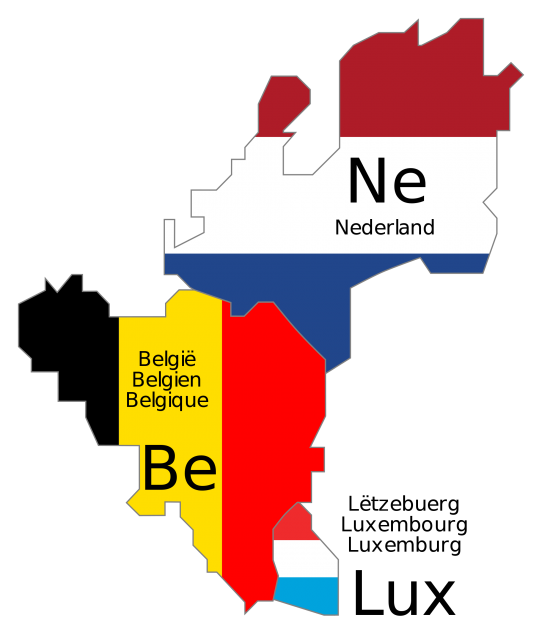Benelux
BENELUX IS THE name of the customs union created in 1956, named for the initial syllables of its three member states: BELGIUM, NETHERLANDS, and LUXEMBOURG. The name originally applied to the economic pact between the three countries, the Benelux Economic Union, but is now also used to refer to the three countries as a geopolitical entity. The goal of the customs union was to help rebuild the economies of the Low Countries after the devastation of World War II through the promotion of free movement of workers, capital, services, and goods between all three member states. The Benelux commission, with its headquarters based in Brussels, set about removing all barriers to free trade such as border tariffs and work permits.
The idea of a unified Low Countries is not new to the 20th century. In the Middle Ages, the entire region formed a collective economic unit under the Valois Dukes of Burgundy and their successors after 1477, the Hapsburgs. The 17 provinces of the Low Countries, plus the Duchy of Luxembourg, subsequently formed an essential part of the empire of Hapsburg Spain, the processing plant for boatloads of silver arriving each year from the New World.

Major cities like Ghent, Bruges, and Antwerp created industries and banking empires that rivaled northern Italy for the lead in the technological and economic revolution of the Renaissance. The breakup began with the revolt of the Dutch in the late 16th century. Their golden age in the 17th century was had mostly at the expense of their southern neighbors, who continued to be ruled by SPAIN, and then AUSTRIA until the 1790s. The three states were united once again at the end of the Napoleonic Wars, under the single rule of the Dutch, but this union lasted only 15 years, and the Belgians revolted against Dutch rule in 1830. A truncated Luxembourg remained attached to the Netherlands, however, until 1890, when it too became completely independent. Each maintained a strict policy of neutrality toward their larger neighbors.
The devastation of the two world wars, however, convinced the three states that going it alone would never secure the prosperity of all three countries. They had few raw materials, but abundant skilled labor, and easy access to the sea and major shipping lanes: Rotterdam and Antwerp are the largest and most active ports in Europe. Relatively small populations and highly productive industries meant all three were dependent on trade and international cooperation, stability, and peace. The impetus for their cooperation was the importance of getting coal and steel from the hills of southern Belgium and Luxembourg, to the factories and ports of the Belgian and Dutch coasts as smoothly and efficiently as possible. A plan for the Benelux Economic Union was therefore formed by the governments of these countries before World War II was even over.
From their exile in LONDON, England (all three countries were under Nazi occupation), representatives of the three governments laid down the basic plan for the union in 1944, but it was not put into place until the formal signature of the Union Treaty at the Hague in 1958, by which time a larger group, inspired by the same principles, had also been created, the ECSC (European Coal and Steel Community), formed in 1952 by the three Benelux nations, plus West Germany, FRANCE, and ITALY.
This led to the formation of the European Economic Community in 1957, which evolved into the EUROPEAN UNION (EU) in 1993. The Benelux Customs Union served as a model for the creation of the EU, and many of its treaties and laws are simply extensions of Benelux policies. The Benelux nations were also founding nations of the NORTH ATLANTIC TREATY ORGANIZATION (NATO) in 1949, giving up their neutrality for stronger alliances with their larger neighbors.
Relations between the Benelux countries led to increased laxity in border crossings, eventually developing into the Schengen agreement of 1985, signed in the small town of Schengen, Luxembourg. This agreement removed most travel barriers for its original signatory nations, the Benelux countries, France, West Germany, Spain, and PORTUGAL, and now including additional EU members. One of the primary goals of the Benelux union was to pursue the development of Europe, and it continues to take common initiatives to stimulate integration.
Although the economic necessity for the union has mostly dissipated (coal and steel are no longer the power they were), the partnership is still useful, allowing these small states to coordinate their points of view so as to have the same weight as the larger, more populous nations of the EU.